The Challenges with Automate Publishing
An overview of the challenges when you move from a traditional workflow to the automatic layout
ARTICLES
Automatic layout is a great thing, and this is what AGL strives for, however understanding what it means and understand how it works can be tough for many, especially for customers with years of experiences in producing catalogs the traditional way.
The main goals when you move from a traditional method, where each page is designed by hand, to automate publishing, where the pages are generated from a software, is to populate your catalog faster while retaining the flexibility to make changes to the organization of your content by moving parts and adding or removing products.
With a traditional workflow this becomes extremely complex while approaching the complete population of your catalog, see the chart "A" below:
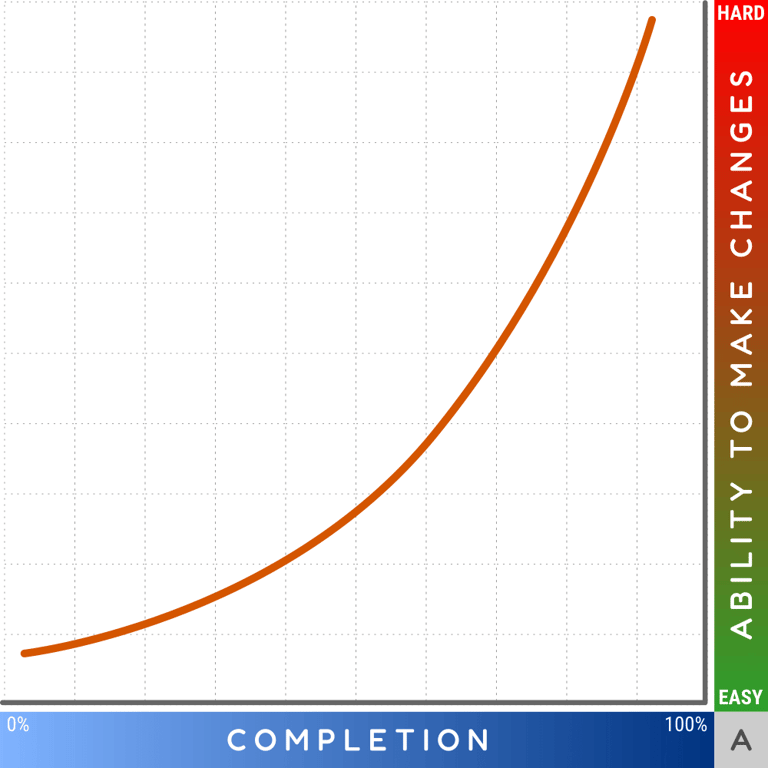

Chart A shows how the curve raises up while the catalog is fully populated and therefore changes become unfeasible.
The chart "A" shows the nightmare of any designer, the issue of making changes when you are getting close to finish your assignment. In manual editing your content doesn't flush, even though some DTP software tried to introduce flexible layouts to help with that, the reality is that often these layouts create additional and unwanted issues. Assuming your layout is static you will have 300 pages and you must add 10 new products on page 100 you have to modify basically 200 pages; and what does it happen if after a week you must remove 15 discontinued products from various pages?
I know it for direct experience, it happens that you and your customer (or boss) enter together into the "stress zone" (chart: B). The stress zone is a discomfort situation between the designer (or the design team) and the clients (or the employer); in this area the designer is frustrated because he/she can't receive or accept anymore changes while the client is demanding for them, and it becomes increasingly irritating for the designer’s unwilling attitude.
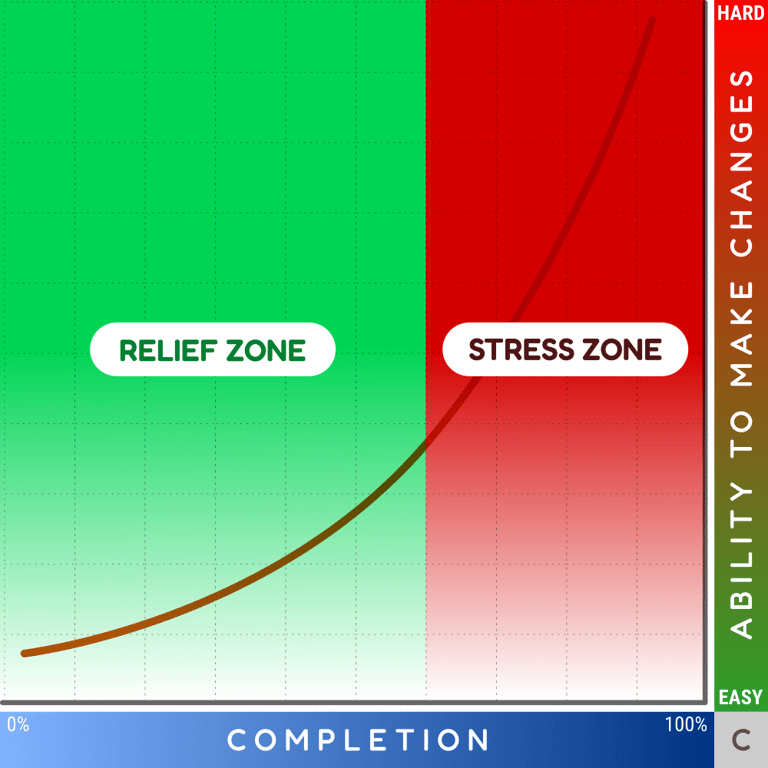

Chart C shows the stress zone starts around 60% of the catalog's completion.
The stress zone is a very delicate moment that can lead to a variety catastrophic outcomes; useless to say that I was witness of tragedy situations where the designer renounced to work on a project and where the client took off the project and assigned to someone else.
As usual in these situation the communication is the key. Seasoned designers and seasoned clients know how to dealing with the stress zone, however this has nothing to do with the skills of the designer or the complexity of the catalog, it is simply the consequence of the traditional workflow.
With automate publishing the situation is inverse and the curve hits the complexity much earlier (see chart: B) than traditional workflow that it usually goes smooth around 60~70% of the project. The curve almost draws a parabola with the inability to make changes that drops pretty soon, remaining flat till the catalog completion:
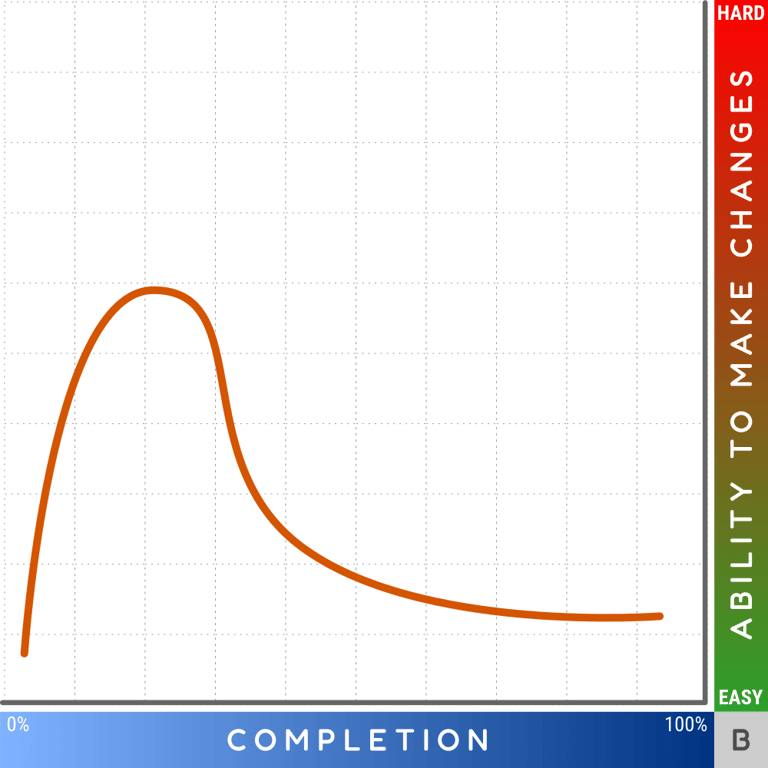

Chart B shows a completely different curve, with the complexity shifted at the initial stage.
With the automation the complexity is at the beginning of the very first catalog. The main critical issue to address is about consolidating the catalog's database, and this depends by the sources (spreadsheets, or other media) and by the goodness of the products' information; for instance, I constantly noticed that old but stable products tend to be lesser curated than recent entries. With a manually designed catalog it easier to juggle with this inconsistencies and disguise the lack of information, unfortunately this is not recommended for automatic pagination that, on the contrary, leverages predictability starting from the layout itself.
As you already figured out with AGL, and generally speaking with automatic pagination, 80% of the stress zone is related with the database consolidation because it is first task to address, check chart "D":
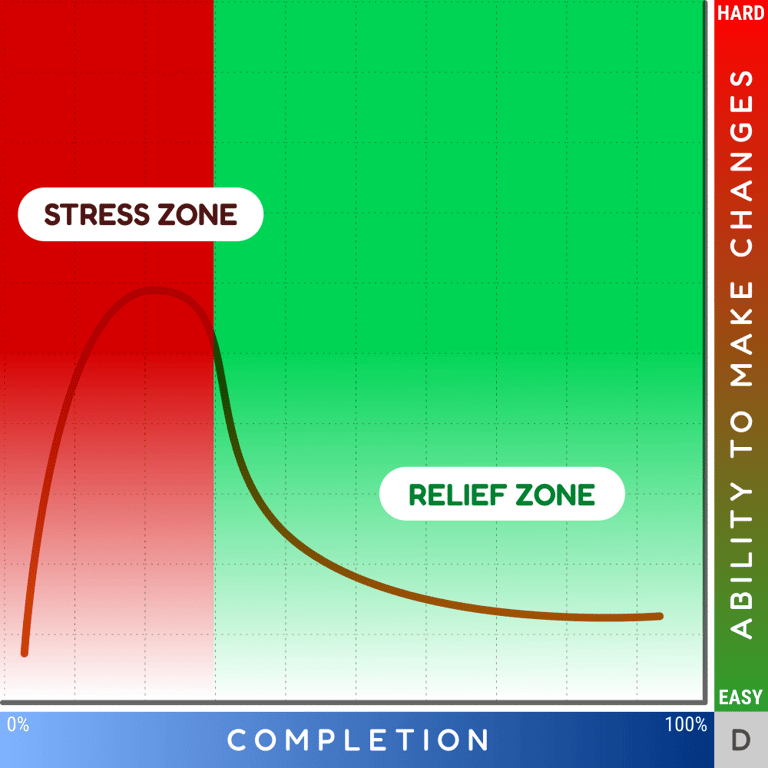

Chart D shows the stress zone that starts almost at the beginning.
With automate publishing you already start jumping directly into the "stress zone"; especially if the client doesn't have a solid base from which create and consolidate the database for the catalog. If the client, or your upper management, has previous experience with traditional catalog design the situation can escalate quickly.
Automate publishing is not anything new, however it never took off, mainly because designers have always preferred the traditional method and web development was already a thing, thus developers never got massively involved in automatic pagination, and it ended up in being rather a niche built on top of proprietary software. This digression served to explain the context: it is very unlikely that small and medium businesses have ever employed designers or specialists in automatic pagination, and dealing with automatic layout in general if not for simple tasks such as mailers, labels or business cards.
Starting into the stress zone is not ideal, and as I already mentioned communication is the key, but the good news is that when the client is educated about the process, and really grasp it, he/she becomes more interested and involved, sometimes they are even excessively enthusiastic and want more features, I call this phase discovery zone (check charts D):
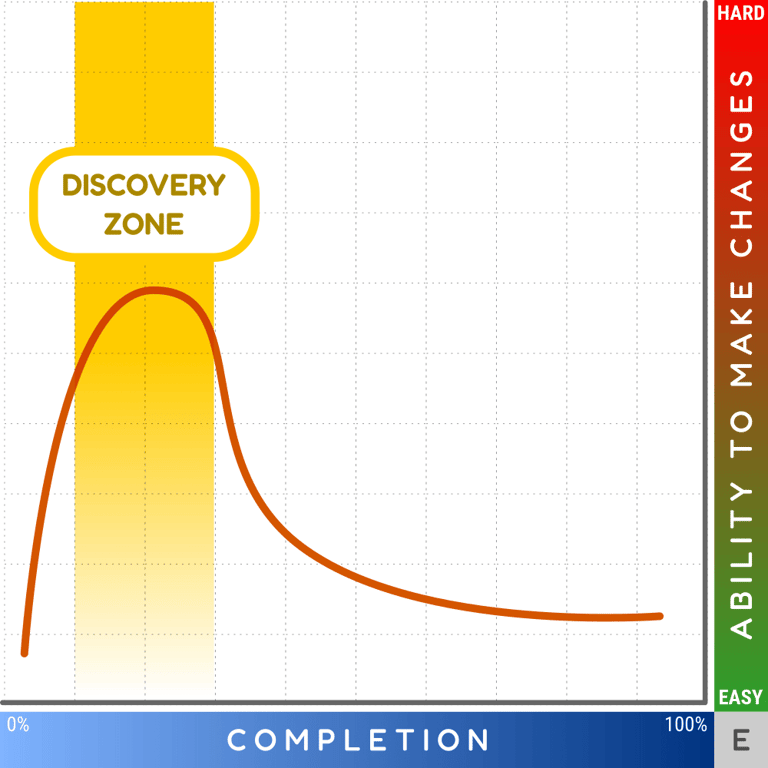

Usually AGL is able to intercept the majority of the customers needs, and I discourage new features for the first catalog iteration, but it is interesting to notice the discovery zone is the transition from the stress zone to the relief zone; once entered into the relief zone this status becomes permanent. As a matter of fact, the big difference between the manual method and the automated one is that, when you already consolidated the database, at the next iteration you will find the desired conditions to start and complete the task in the relief zone: your client is already educated and aware about the process, and the database is already consolidated and making changes would be a regular task.
The real benefit of using automate publishing and product like AGL, is to use the technology to foster an environment that converts a delicate task into something that is predictable and nice to work with, promoting a stress-free workflow where anyone can use its mental and physical resources to be productive and innovative rather that to use them to resist under the pressure.
If your are interested in learning more, please, do not hesitate to contact me and understand how AGL can help to improve the quality of your business and to produce your catalogs better and faster!
Chart E show the the discovery zone, if compared with chart D, the discovery zone is the transition from the stress to the relief zone.
